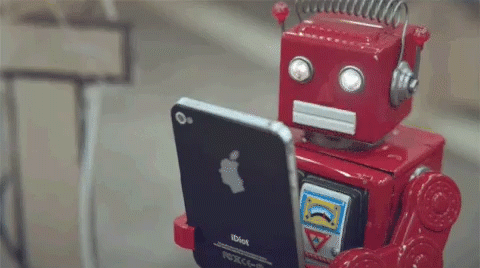
The rise of the chatbot
Part of a continuing series.
Rise, Chatbots! Rise?
“Mastering change” can have as much to do with reading tea leaves as reading trade magazines. It’s one thing to react quickly to something cool that a competitor did, it’s another to get there first.
This means watching, playing with and imagining ways to use new toys. It means investing in tech that doesn’t always meet its vision. (There’s a pair of Google Glass around here somewhere.)

Chatbots are one of the emerging communication tools we’ll likely be tinkering with.
In the short time we’ve been researching, the ups-and-downs in bot-world have followed a cryptocurrency-like volatility. What was set to be a one-off post on the subject will likely have much follow up as the back-and-forth settles.
Here’s a little on what we’ve seen so far: Bots have advanced solidly since the TayTweets fiasco – Microsoft’s dope-loving, holocaust-denying AI. Throughout much of 2016, breathless pieces about innovative A.I. forever “transforming the customer experience” became the norm. Giants like Google and Facebook were jumping in with both feet and affordable, easy-to-use chatbot templates like rundexter allowed beginners to dip a toe in.
But it wouldn’t take long for the confutations to follow. Digiday’s “Drop it like it’s bot,” reported on brands cooling to bots – Facebook Messenger among them. The early chatbot proponent repeated Microsoft’s scale-back after seeing 70% failure rates.
This type of sentiment continues today, like Wired declaring this month that “Chatbots are dead” and The Next Web that “Chatbots are BS.”
But, for every naysayer, there is much indication that bots are poised to rise once and for all. A WARC paper this month on digital customer experience projects that by 2020, customers “will manage 85% of their relationship with an enterprise without interacting with a human.”
The WARC quote is just one that points toward an imminent chatbot future. Here are a few more that you don’t need to be a tea leaf reader to understand.
In 2018, more than 1 million bots will be created on Facebook Messenger.
Mikael Yang, Co-Founder and CEO of ManyChat, Forbes, December 2017
Bots are 52% of web traffic.
“The Internet is mostly bots,” The Atlantic, January 2017
80% of businesses want chatbots by 2020
Business Insider, December 2016
This may never pass beyond vaporware, but the question for us is shifting from not if, but when will we build a bot for a client.
Or, perhaps one for our own agency.
Watch this space to follow our exploration of chatbots – their successes, failures and our own trials and travails in developing one.
)
)